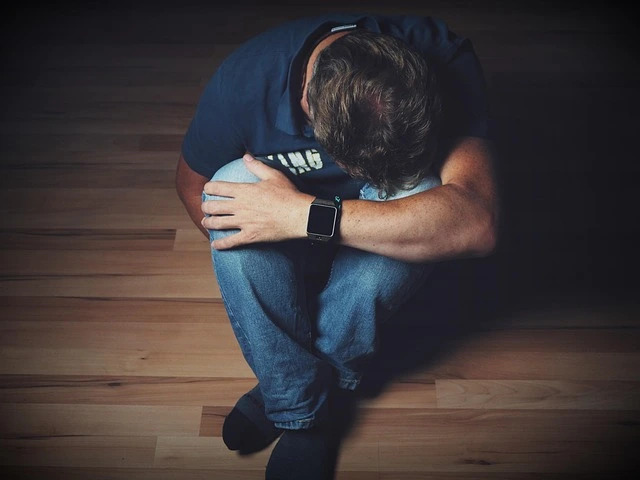Depression is a common yet serious mental health condition that affects millions of people worldwide. It goes beyond temporary sadness and can impact every aspect of life, including work, relationships, and physical health. Understanding depression, its causes, symptoms, and treatment options is essential for managing and overcoming this debilitating condition. This article provides an in-depth look at depression, its various forms, and effective ways to seek help.
1. Defining Depression
Depression, also known as major depressive disorder (MDD), is a mood disorder characterized by persistent sadness, hopelessness, and a lack of interest in activities once enjoyed. According to the World Health Organization (WHO), depression is one of the leading causes of disability worldwide, affecting people of all ages and backgrounds.
Depression is not merely feeling “down” or “sad” occasionally. It is a chronic condition that can last for weeks, months, or even years if left untreated.
2. Types of Depression
Depression manifests in different forms, each with unique symptoms and triggers. The most common types include:
A. Major Depressive Disorder (MDD)
This is the most severe form of depression, characterized by prolonged episodes of sadness, hopelessness, and a lack of motivation.
B. Persistent Depressive Disorder (PDD)
Also known as dysthymia, PDD is a chronic form of depression lasting for two years or more. Symptoms may be milder than MDD but are long-lasting.
C. Bipolar Disorder
Bipolar disorder includes periods of depression alternating with episodes of mania or extreme energy.
D. Seasonal Affective Disorder (SAD)
This type of depression occurs seasonally, typically during winter months, due to reduced sunlight exposure.
E. Postpartum Depression (PPD)
PPD affects new mothers after childbirth, leading to intense sadness, anxiety, and difficulty bonding with the baby.
F. Atypical Depression
People with atypical depression experience temporary mood improvement in response to positive events but still suffer from significant depressive symptoms.
3. Causes of Depression
Depression can be triggered by a combination of biological, psychological, and environmental factors. Some common causes include:
A. Biological Factors
- Genetics: A family history of depression increases the risk.
- Brain Chemistry: Imbalances in neurotransmitters such as serotonin, dopamine, and norepinephrine contribute to depression.
- Hormonal Changes: Fluctuations in hormones (e.g., during pregnancy or menopause) can trigger depressive episodes.
B. Psychological Factors
- Personality Traits: People with low self-esteem or perfectionist tendencies may be more vulnerable to depression.
- Negative Thinking Patterns: Persistent pessimistic thoughts can contribute to depressive feelings.
- Trauma and Stress: Childhood abuse, loss of a loved one, or major life changes can trigger depression.
C. Environmental and Lifestyle Factors
- Chronic Illness: Conditions like diabetes, heart disease, or chronic pain can increase the risk of depression.
- Substance Abuse: Alcohol and drug addiction often coexist with depression.
- Social Isolation: Lack of social support and loneliness can worsen depressive symptoms.
- Unhealthy Lifestyle: Poor diet, lack of exercise, and irregular sleep patterns contribute to mental health decline.
4. Symptoms of Depression
Depression affects both the mind and body. Common symptoms include:
Emotional Symptoms
- Persistent sadness or emptiness
- Feelings of hopelessness and helplessness
- Loss of interest in hobbies or activities
- Anxiety and irritability
- Suicidal thoughts or self-harm tendencies
Physical Symptoms
- Fatigue and low energy levels
- Changes in appetite (overeating or loss of appetite)
- Sleep disturbances (insomnia or excessive sleeping)
- Unexplained aches, headaches, or digestive issues
Cognitive Symptoms
- Difficulty concentrating
- Memory problems
- Indecisiveness and poor problem-solving skills
5. How Depression Affects Daily Life
Depression can disrupt daily routines, affecting:
- Work and Productivity: Difficulty focusing and completing tasks.
- Relationships: Strained personal and professional relationships.
- Physical Health: Increased risk of heart disease, obesity, and weakened immune system.
- Self-Care: Neglecting personal hygiene and healthy habits.
6. Treatment Options for Depression
Fortunately, depression is treatable, and multiple approaches can help individuals recover:
A. Psychotherapy (Talk Therapy)
- Cognitive Behavioral Therapy (CBT): Helps individuals recognize and change negative thought patterns.
- Interpersonal Therapy (IPT): Focuses on improving relationships and social skills.
- Psychodynamic Therapy: Explores past experiences and emotional conflicts.
B. Medication
- Antidepressants: Selective serotonin reuptake inhibitors (SSRIs), serotonin-norepinephrine reuptake inhibitors (SNRIs), and tricyclic antidepressants (TCAs) help regulate brain chemistry.
- Mood Stabilizers: Used in cases of bipolar disorder.
- Anti-Anxiety Medications: Sometimes prescribed alongside antidepressants.
C. Lifestyle Changes
- Regular Exercise: Physical activity releases endorphins, improving mood.
- Healthy Diet: Foods rich in omega-3 fatty acids, vitamins, and minerals support brain function.
- Quality Sleep: Establishing a consistent sleep schedule improves mental health.
- Mindfulness and Meditation: Reduces stress and promotes emotional balance.
D. Alternative Therapies
- Light Therapy: Effective for seasonal affective disorder (SAD).
- Acupuncture: May help reduce symptoms in some individuals.
- Herbal Supplements: St. John’s Wort and omega-3 supplements may provide relief (consult a doctor before use).
7. Preventing Depression
While depression cannot always be prevented, adopting certain habits can reduce the risk:
- Build Strong Social Connections: Maintain relationships with supportive friends and family.
- Manage Stress: Use relaxation techniques like yoga, meditation, or journaling.
- Engage in Meaningful Activities: Hobbies and volunteering provide purpose and joy.
- Limit Alcohol and Drug Use: Substance abuse worsens depression.
- Seek Help Early: Early intervention can prevent symptoms from worsening.
8. Breaking the Stigma Around Depression
Despite growing awareness, mental health stigma still exists. Addressing it requires:
- Education and Awareness: Understanding depression reduces misconceptions.
- Encouraging Open Conversations: Talking about mental health normalizes seeking help.
- Support from Society: Workplaces and schools should provide mental health resources.









